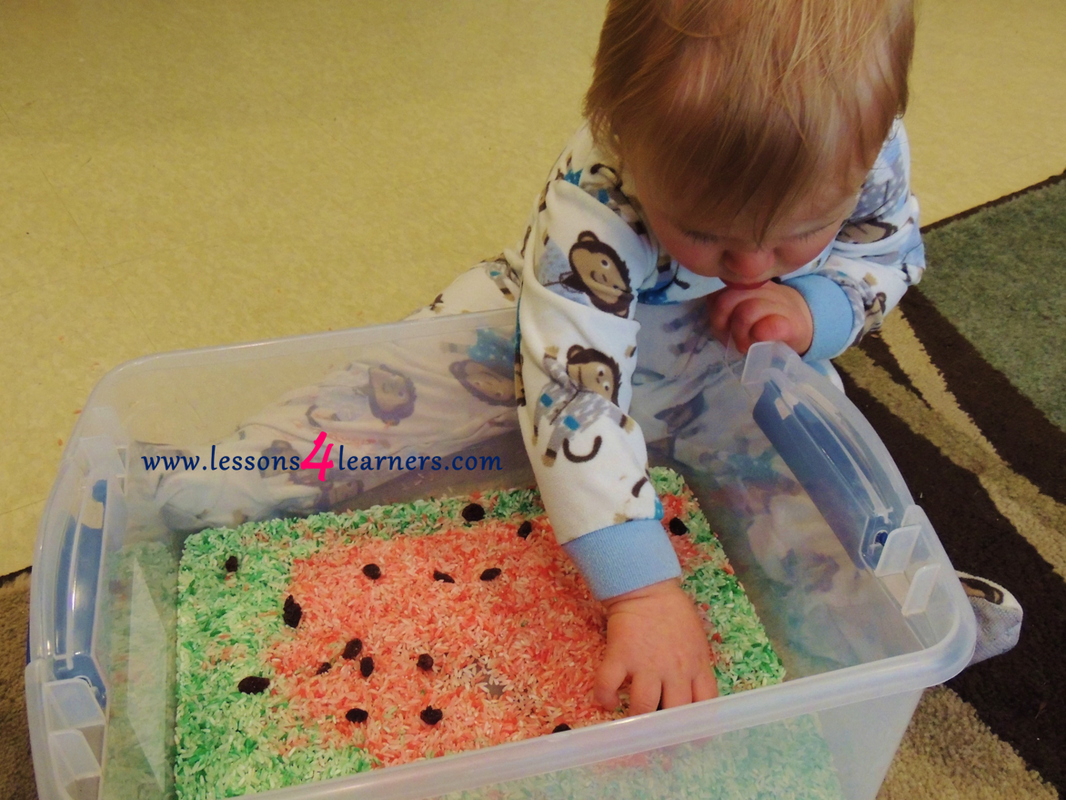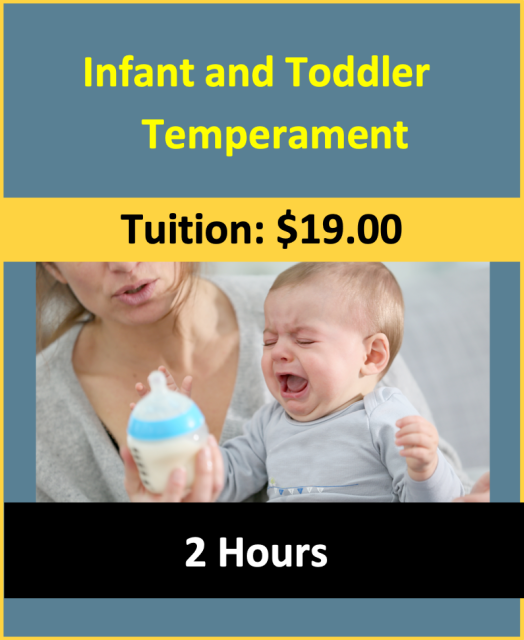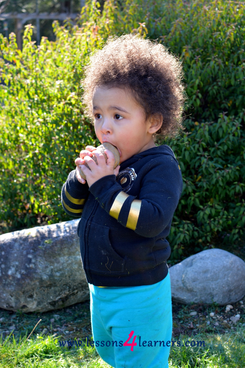Watermelon Sensory Rice
Lesson Plan:
|
Activity:
Watermelon Sensory Rice
Lesson plan developed by Ms. Erika Geelhoed, BA Ed
Age Group:
* Lesson plan objective and assessment can be adapted to use this activity with preschoolers.
Objectives:
Children will:
II.4.3a
|
Procedure:
- Prep for activity by dying rice.
- Put 2 tablespoons of water into the ziplock bag and add a few drops of food coloring.
- Pour in two cups of rice and seal the bag.
- Squish the liquid and rice around to make sure all the grains get coated.
- Lay out rice on a cookie sheet that is covered in aluminum foil.
- Repeat this process for your other color.
- Allow rice to dry for at least 30 minutes before presenting it to the child.
- Arrange the green rice along the outer portion of the bin and the red/pink rice on the inside.
- Add some black beans as well to act as seeds.
- Present the sensory bin to the children.
Assessment:
- Observe and record how the children react to the new textures.
Note: Please provide appropriate supervision to the children in your care when completing all activities. You will need to decide what types of activities are safe for the children in your care. Appropriate and reasonable caution should be used when providing art and sensory experiences for children. Toddlers require special caution, only use non-toxic materials, and do not allow toddlers to put things in their mouths that are a choking hazard.
Click on the course icon for enrollment information.
Promoting Creativity
|
Creativity is about seeing things in a new way and putting ideas together differently, so that a new idea emerges. Creativity is about bringing those ideas out of your head and making them more tangible. They do not always take form sufficiently to become a creation, because many creative ideas are abandoned along the way. The child formulating those ideas becomes distracted, loses focus, is constrained or stopped from carrying the creative process through.
Teachers should offer young children plenty of time and space to explore ideas within an enabling environment. You should stand back sufficiently to notice what intrigues, confuses and inspires the young children you are working with, so that any intervention occurs from a closer understanding of children’s creativity. |











